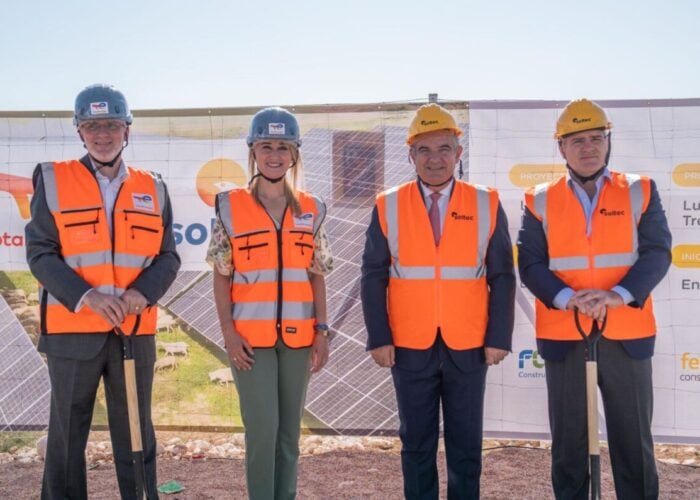Tesla’s lithium-ion ‘Gigafactory’ will be built in Nevada, company officials including chief executive Elon Musk revealed alongside the US state’s governor at a press conference yesterday afternoon.
The site of the factory had been the subject of much speculation and discussion, with five states competing for the right to host the facility. Nevada was in direct competition with New Mexico, Arizona, Texas and California, where Tesla’s offices and EV assembly lines are located. Tesla claims that the factory will bring over 6,000 jobs to the winning state.
Unlock unlimited access for 12 whole months of distinctive global analysis
Photovoltaics International is now included.
- Regular insight and analysis of the industry’s biggest developments
- In-depth interviews with the industry’s leading figures
- Unlimited digital access to the PV Tech Power journal catalogue
- Unlimited digital access to the Photovoltaics International journal catalogue
- Access to more than 1,000 technical papers
- Discounts on Solar Media’s portfolio of events, in-person and virtual
News outlets including local paper Reno Gazette-Journal and the New York Times reported that the state offered Tesla tax incentives worth as much as US$1.25 billion, far exceeding the US$500 million in incentives the company had requested from the chosen state. Industry estimates have put the cost of building the factory at about US$5 billion.
Tesla has projected that the Gigafactory will produce 500,000 batteries, totalling around 50GWh by 2020, with construction to begin this year for production to start in 2017. The output of the factory will initially be at 35GWh, but the company is intending to ramp up production between 2017 and 2020. By doing so Tesla hopes to reduce battery prices by as much as 30%. According to analysis firm Lux Research, the EV maker’s costs for battery production are currently at around US$274kWh, which it hopes to trim down to US$196kWh.
It is also anticipated that the factory will supply Tesla’s sister company SolarCity, headed by Elon Musk’s cousins Lyndon and Peter Rive, with batteries for stationary storage systems. SolarCity launched pilot programmes to deploy lithium-ion batteries for residential and commercial customers in California and a handful of other US states, including Massachusetts and Connecticut.
Tesla has partnered with Panasonic, which at present supplies Tesla with batteries from its Japanese facilities. Panasonic has reportedly invested around US$1.4 billion in the project. Lux Research projected that if Tesla does sell the 500,000 cars it has predicted, Panasonic could make as much as US$15 billion back. However the firm believes the figure is more likely to be around 240,000, which would result in 57% overcapacity in output from the factory.
Dean Frankel of Lux told PV Tech that it was not the research firm’s intention to “pour cold water” on enthusiasm surrounding the announcement. Frankel stressed that the overcapacity was not likely to be a significant long-term concern, but nonetheless said that he felt the 500,000 EVs by 2020 was an ambitious target and explained why.
“We’re talking about one single claim that we’re evaluating. Their claim of 500,000 EVs in the year 2020. For that claim they would need the entire 35GWh capacity in that year. We don’t see that being likely; if we look at where [total] global electric vehicle sales are projected to go, we’re talking about 440,000 in the year 2020. Meaning that Tesla themselves would have to grow the market and have pretty much the entire EV market. The market itself may be bigger than that, and there are a number of factors which contribute to that like rising gas prices and infrastructure, but for Tesla to hit these targets it would absolutely be unprecedented and something that we don’t see as being likely at all.”
The lead author of the Lux Research report, Cosmin Laslau, also said that the cost of the Model 3 was likely to only drop by around US$2,800 as a result of production lines being supplied directly from the Gigafactory.
Frankel said one of the key reasons for Tesla choosing Nevada for the factory was that the firm had prioritised getting product to market quickly, and factors including Nevada’s relatively convenient location and lack of bureaucratic red tape standing in the way in the state compared to others nonetheless made it an appropriate choice for Tesla.







